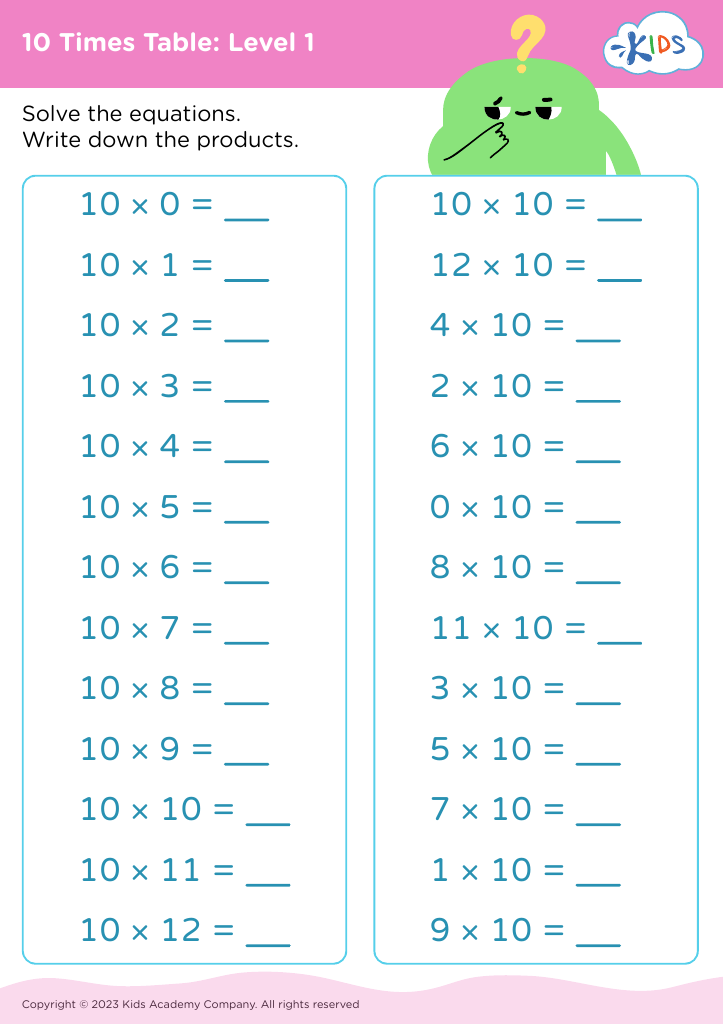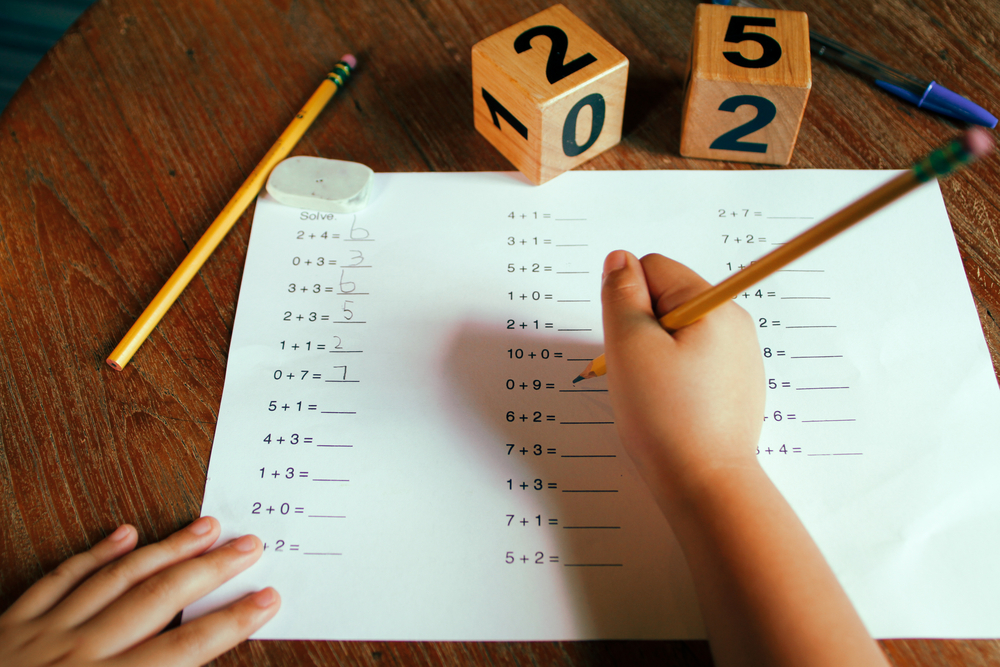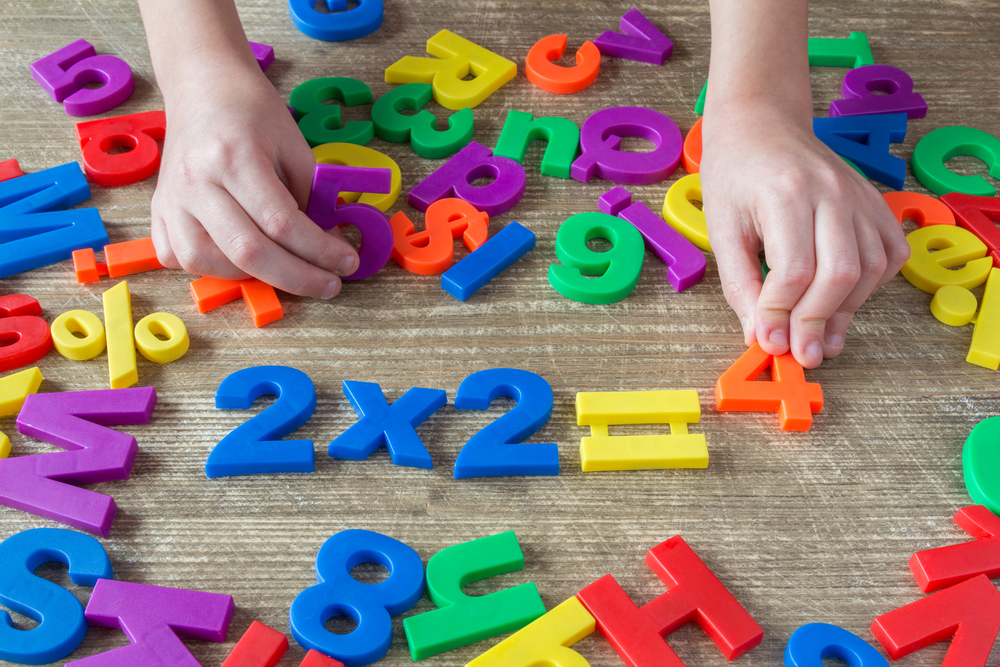Mastering 10 times table Worksheets for Kids
1 filtered results
-
From - To
Question/Answer
How to train the Mastering 10 times table skill in Grade 3 students learning about Basic Times Tables up to 12?
To train Grade 3 students in mastering the 10 times table, use the following strategies: 1. **Visualization**: Introduce the concept that multiplying by 10 adds a zero to the number (e. g. , 3 x 10 = 30). 2. **Interactive Games**: Use online games and apps focused on the 10 times table for engaging practice. 3.
What does the Mastering 10 times table skill mean when it comes to Grade 3 Basic Times Tables up to 12 learning?
Mastering the 10 times table skill in the context of Grade 3 Basic Times Tables up to 12 means that a student can quickly and accurately multiply any number by 10. This foundational skill aids in understanding multiplication patterns and prepares students for more complex multiplication and division concepts, as well as real-world applications involving base-10 calculations.
Why is the Mastering 10 times table skill important for Grade 3 students?
Mastering the 10 times table is crucial for Grade 3 students as it lays a foundational understanding of multiplication, a core arithmetic operation. This skill enhances their ability to quickly perform calculations, aids in grasping more complex math concepts, and is essential for future learning in mathematics, including division, fractions, and problem-solving, thereby building their overall numeracy confidence.












